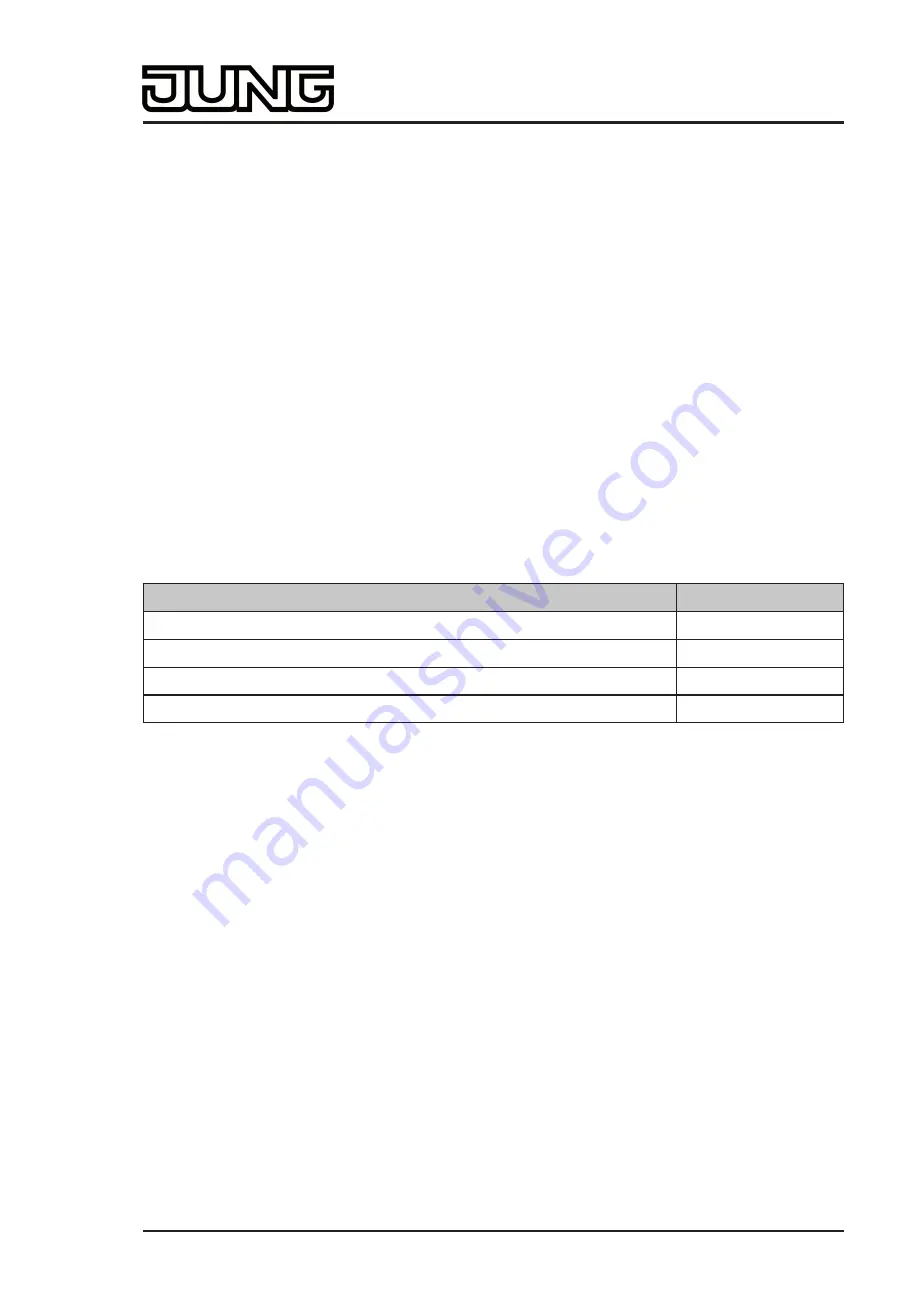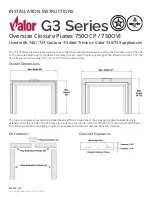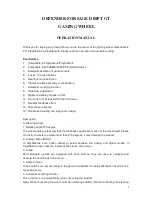
Art. No. DS 4092 TS
basically the same.
If the actuator does not have a separate feedback function, the object "Value" and "Feedback
value" must be linked on the rotary knob to the objects via an identical group address.
Otherwise, no value adjustment is possible.
i
The actuator must actively transmit the feedback value on change.
i
After a device reset (bus voltage return or ETS programming operation), the value of the
communication object "Feedback value" is set to "0". A value adjustment then begins with
this value if the activated actuator has still not transmitted any feedback to the device with
an initialisation value that varies from this.
The effective step width for the value adjustment is obtained from the speed of a rotary knob
operation. During a slow operation (notch by notch), the rotary knob constantly transmits values
in small step width to the actuator. The value adjustment always begins with the value stored in
the communication object "Feedback value". During a slow, continuous operation, the value is
adjusted with each notch by the step width (1...31) configured in the ETS and transmitted via the
object "value". An activated dimmer actuator e.g. receives the value sequence dimming and
controls the brightness of the connected lighting system each time a new telegram is
transmitted, i.e. by one notch slightly brighter or slightly darker during each adjustment of the
rotary knob.
In contrast to this, a fast operation causes a significant change in brightness in this example by
the rotary knob transmitting a value with a greater step width to the actuator. The size of the
step width is determined by the rotation angle by which the rotary knob is turned within the
operation time. The table below shows the adjustment step widths depending on the rotation
angle during a fast rotary knob operation...
Rotation angle (rotation in segment)
Step width
45° (1/8 rotation)
31
90° (1/4 rotation)
63
180° (1/2 rotation)
127
360° (1/1 rotation)
255
Step widths depending on the rotation angle during a fast rotary knob operation
The rotation angle is interpreted by segments. Regardless of where the rotary knob operation
starts, a value corresponding to the step width is transmitted to the bus depending on the
segments during an operation (figure 26). At the end of the control operation, only one value is
ever transmitted if a corresponding segment was set. The device transmits no continuous value
sequence to the bus during a fast operation.
i
If the direction of rotation changes without interruption during an operation, the device
transmits a value corresponding to the adjusted rotation angle until the direction is
changed. Afterwards, no more telegrams are transmitted continuously until the rotary knob
stops. The device then evaluates this operation as a wrong operation.
Page 63 of 143
Software "Rotary sensor with extensions 10FE1x"
Functional description
















































